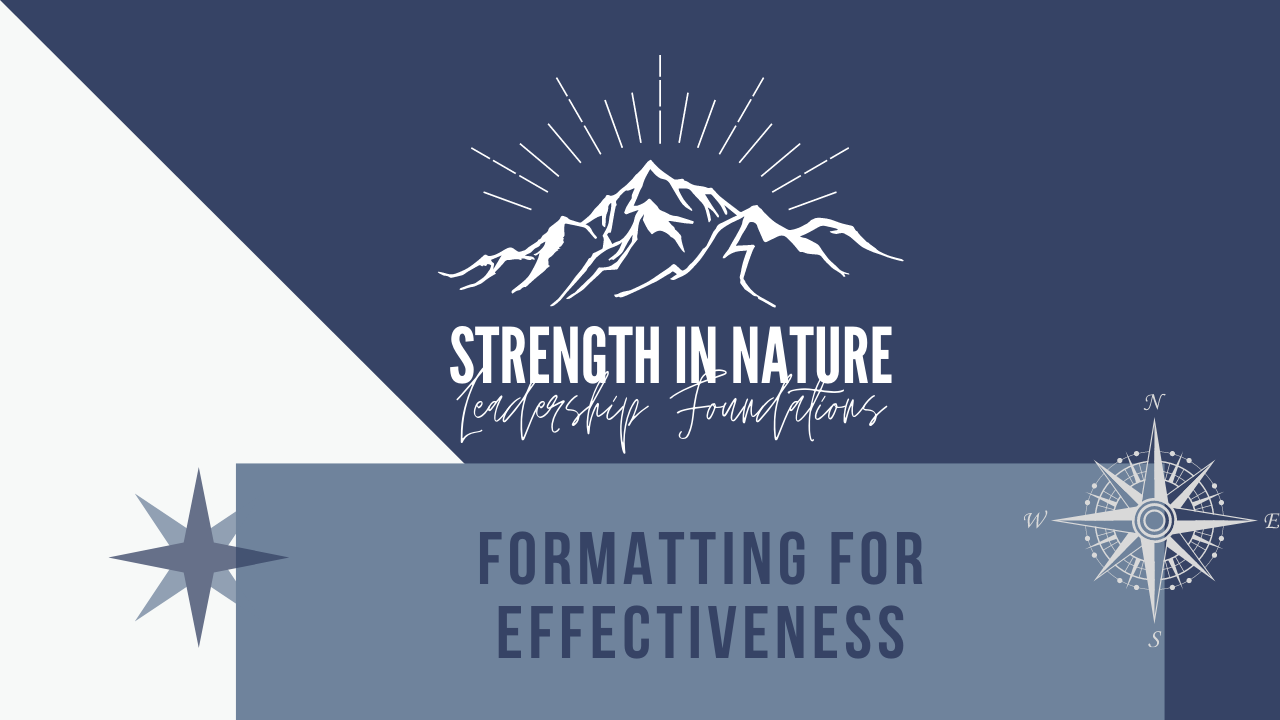Strength in Nature
Character. Community. Capability.
These three pillars make up Likeable Leadership as it is surrounded by the 12 elements to build trust. As a holistic synthesis of servant leadership and transformational leadership, you will learn of the the thought, research, and experience that went into developing the model.
Etiquette | 'et * i * ket
: the conduct or procedure required by good breeding or prescribed by authority to be observed in social or official life (Merriam-Webster, 2021)
As leaders reaching ou...
Hello Succulent Sunday Readers. Happy Valentine's Day. As I write this post, I am waiting for my family to drive home through a snowstorm. It has been long week with some exciting developments and a b...
Hey Succulent Sunday readers! Thanks for joining me again. I love sharing this blog with you each Sunday. Your questions help me through targeted, quiet reflection on these topics.
Today, let's chat ...
This week's blog post focusing on writing brings you the TEACH method of writing. I have borrowed this method from Kent Sanders over at the Daily Writer Podcast. If you are intent on learning how to w...
Hello Sunday Succulent readers! Thank you so much for returning to this series. Each week, I bring you relevant topics that focus on the emotional, physical, and spiritual elements of the overwhelm. T...
Why are you writing an email?
Earlier in this series, we talked about telling a story and two different types of email formats: the CTA (call to action) and the CYA (cover your assets). Today, let's ...
Goal setting is an activity that takes place at the beginning of each new project. During the month of January, we take stock of where we were in the previous year and where we want to go in the curre...
Written communications for leaders require clarity and connection. As the authors of written communications, we seek to deliver information to our team members quickly and accurately in a manner they ...
H! Angela here again. As we collectively try to overcome the overwhelm we see in the world, let us focus on one little habit that we can control and work into our daily lives: take a walk. Followers o...
Today we are going to talk about telling a story. If you are writing an email, you most likely have a specific point in mind. Most business emails fall in to one of two categories: CYA or CTA. First w...
Hi! Angela here. Welcome to Succulent Sunday.
I have chosen succulents for my Overcome the Overwhelm series for 2021. We'll talk about overwhelm in a second, but first, let's talk about cacti and suc...
Welcome to Writing Tip Wednesdays! Thanks for joining me. I'm so glad you are here.
Have you been writing more emails than you ever dreamed of? Wondering if the message is getting across to your team...
SIGNPOST NEWSLETTER
Want Helpful Leadership Tips Every Week?
With a passion for empowering others, Angela J. Buckley is committed to sharing practical strategies that help professionals at all levels become more effective, inspiring leaders. Sign up for Dr. Buckley's newsletter to receive the latest insights on Likeable Leadership.
You're safe with me. I'll never spam you or sell your contact info.













